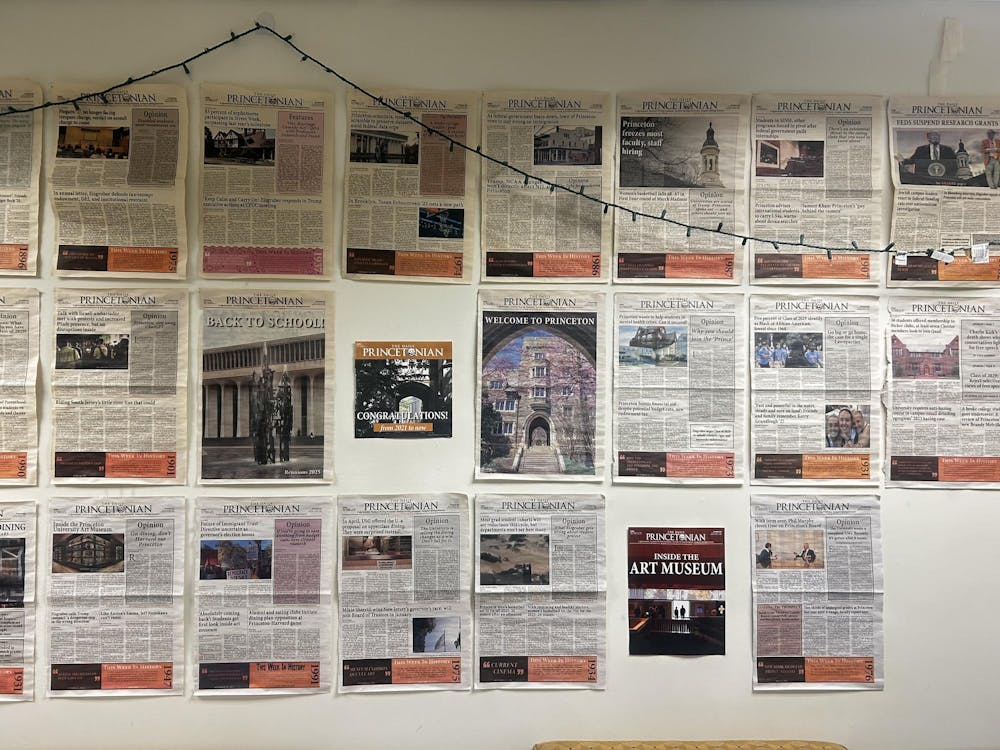After being on a swim team for all four years of high school, I’ve become accustomed to changing in the presence of teammates, both male and female. So when I walked into my hall bathroom the other day wearing nothing but my bath towel and confronted a girl using the men’s restroom, it was probably more embarrassing for her than it was for me. She apologized repeatedly and hurried out the door, but before she left, I heard enough of her rapid-fire explanation/simultaneous apology to understand that she had been locked out of the women’s restroom on account of the recent changes to the codes regulating the women’s restrooms.
The issue regarding female restroom codes was brought to light in the weeks preceding winter break, when a group of three University students created an app aptly titled GirlCode. The application provided anyone with an iPhone the ability to access the codes for all restrooms in all campus dorms, but it was taken down after the creators were met with “pressure from the administration” due to alleged safety concerns. Following the removal of the application, most dormitories changed their codes over Intersession, leaving some girls stranded in their own halls.
As a result, there has been a spate of debate about the role that bathroom codes should play on campus. This past November, then-USG president Shawon Jackson sent out a survey to gauge the student body’s opinion about bathroom codes. Since then, however, we have not received an official email response containing the outcomes of that survey (the closest thing we got was a statement by then-USG president-elect Ella Cheng in a Daily Princetonian article, which showed that of 1635 respondents, a 54.7 percent majority of participantsvoiced their preferences for no bathroom codes on either type of bathroom). Furthermore, the survey was woefully inadequate — it asked a simple multiple-choice question and didn’t account for response variability by gender, grade level, housing situation or other factors.
Supposedly, in the recent meeting between the students responsible for the creation of the contentious application and the administration’s Office of Housing and Real Estate Services, Department of Public Safety, and the Office of the Dean of Undergraduate Students, the possibility of a policy change toward no bathroom codes in either type of bathroom may have surfaced. But again, since no student representatives (besides the creators of the app) were present at the meeting, such results are doubtful at best.
Moreover, none of this changes the fact that the administration’s response to students' needs has been much more reactionary than progressive. The issue has been upfor debate for years, arising again semester after semester, but it wasn’t until this past November that an “official” survey was sent out by the USG to measure the student body’s opinion. However, even this attempt at obtaining a unified picture of popular sentiment, though undoubtedly well-intentioned, failed to provide an accurate representation or comprehensive results. It was only when the application was produced that the administration opted to take action — but instead of working to end the unpopular policy, it instead decided to abruptly change the codes for all female restrooms in the dormitories throughout campus.
The University administration has been quite quick to respond to a variety of other perceived problems — they made rapid reforms earlier this academic year to address compliancy concerns with Title IX stipulations, created the Task Force on Diversity, Equity, and Inclusion and appointed provost David Lee to head the effort, repealed the contentious and widely-disliked policy of active grade deflation, and launched independent investigations when allegations of sexual assault and misconduct at eating clubs came to light — and their efforts should certainly be applauded. But they have undeniably fallen short on other concerns that they may perceive to be less important to the University’s overall public image — as is ostensibly the case regarding differences in gender-based restroom policies.
Columnist Will Rivitz earlier this week agreed on the unpopularity of the policy, but attacked the application as an “ineffective, willfully ignorant, and conceited” method by which to enact change. But as the previous semester has shown, other “traditional” methods haven’t made any progress either. So in the end, was GirlCode the best way to approach the situation? Probably not. But was the University’s response to abruptly change female restroom codes over Intersession an adequate response? Again, probably not. Regardless, the application has succeeded in forcing the administration to pay attention to the issue, albeit in a disparaging way, but we can at least hope that they will proceed progressively from here on.
Jason Choe is a sophomorefrom Rancho Palos Verdes, Calif. He can be reached at jasonjc@princeton.edu.







